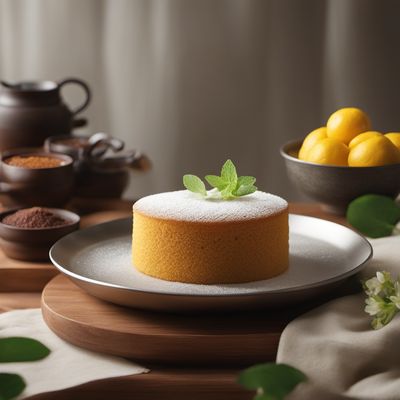
Ingredient
Lotus roots
Unveiling the Beauty Within: Lotus Roots and Their Culinary Wonders
Lotus roots are the rhizomes of the lotus plant, known for their distinctive appearance with multiple holes resembling a honeycomb. They have a crisp texture and a mild, slightly sweet flavor. The roots are typically sliced and used in stir-fries, soups, salads, or pickled preparations. Lotus roots are highly versatile and can be enjoyed both raw and cooked, adding a refreshing crunch to dishes.
Origins and history
Lotus roots have a long history of culinary use, particularly in Asian cuisines. They are native to regions like China, India, and Japan, where they have been cultivated and consumed for centuries. Lotus roots hold cultural significance in these countries and are often associated with auspicious symbolism. In traditional Chinese medicine, lotus roots are also valued for their potential health benefits, believed to promote respiratory health and improve digestion.
Nutritional information
Lotus roots are low in calories and fat, making them a healthy addition to meals. They are a good source of dietary fiber, vitamin C, potassium, and various minerals. The roots also contain antioxidants, which help protect the body against oxidative stress and inflammation. Including lotus roots in your diet can contribute to overall well-being and support a balanced, nutritious eating plan.
Allergens
Lotus roots are not known to be common allergens. However, individuals with known allergies to other root vegetables, such as carrots or potatoes, should exercise caution and consult with a healthcare professional if necessary.
How to select
When selecting lotus roots, look for firm, unblemished roots with a smooth, intact skin. Avoid roots that are soft, discolored, or have signs of mold or decay. The holes in the roots should be clean and free from any debris. If purchasing pre-sliced lotus roots, ensure that they are fresh and have not turned brown. It is advisable to buy lotus roots from reputable sources or specialty Asian markets to ensure quality and freshness.
Storage recommendations
To maintain the freshness and quality of lotus roots, store them in a cool, dark place with good ventilation. If the roots are still attached to the plant, remove any excess soil and trim the ends before storing. Wrap the roots in a damp cloth or paper towel to prevent dehydration, and place them in a perforated plastic bag or airtight container. Stored properly, lotus roots can last for up to two weeks. Once cut or peeled, it is best to use them within a few days to retain their crispness and flavor.
How to produce
Lotus roots can be challenging to produce for amateur gardeners, as they require specific growing conditions. They thrive in muddy or marshy environments, making them suitable for water gardens or containers with ample water supply. The roots can be propagated from rhizomes or seeds, and they require a warm climate and plenty of sunlight to grow. It is important to provide adequate water and nutrients to support their growth. Growing lotus roots may require some expertise and patience, but the reward is a unique and rewarding culinary ingredient.
Preparation tips
Lotus roots can be prepared in various ways to highlight their unique texture and flavor. They can be sliced and added to stir-fries, soups, or stews, providing a refreshing crunch and absorbing the flavors of the dish. Lotus roots can also be pickled, which enhances their natural sweetness and adds a tangy element to salads or appetizers. Additionally, they can be thinly sliced and enjoyed raw in salads or used as a garnish for sushi or sashimi. Experimentation is key when working with lotus roots, as they can be used in both traditional and innovative culinary creations.
Substitutions
Water chestnuts or jicama can be used as substitutes for lotus roots in certain recipes. They offer a similar crisp texture and mild sweetness that can complement various dishes. However, keep in mind that the flavor and appearance may differ slightly, which can affect the overall taste and presentation of the final dish.
Culinary uses
Lotus roots are widely used in Asian cuisines, particularly in Chinese, Japanese, and Indian dishes. They are commonly featured in stir-fries, soups, stews, and salads, adding a unique texture and flavor. In Chinese cuisine, lotus roots are often used in traditional dishes like braised lotus root with pork or stir-fried lotus root with vegetables. In Japanese cuisine, they are popularly enjoyed as a tempura ingredient or added to hot pots. Lotus roots are also used in Indian cuisine, where they are incorporated into curries, pickles, and snacks. Their versatility makes them suitable for both vegetarian and non-vegetarian dishes.
Availability
Lotus roots are commonly available in regions where they are cultivated, such as China, India, Japan, and other Asian countries. They can also be found in specialty Asian markets or grocery stores that cater to international ingredients. In Western countries, lotus roots may be less commonly available but can still be sourced from specialty stores or online retailers.
More ingredients from this category
Recipes using Lotus roots » Browse all

Chinese Imperial Sponge Cake
Imperial Delight: A Regal Sponge Cake Fit for Emperors

Sai Mai Lou - Chinese Coconut Milk Dessert
Coconut Bliss: A Delightful Chinese Dessert

Homemade Lotus Seed Mooncakes
Divine Delights: Homemade Lotus Seed Mooncakes

Haipai-style Ginseng Chicken Soup
Savory Ginseng Infusion: Haipai-style Ginseng Chicken Soup

Spicy Fish Hot Pot with Lotus Root and Enoki Mushrooms
Fiery Seafood Delight: A Chinese Hot Pot Adventure

Chinese Buddhist Rice Pudding
Enlightened Rice Delight

Steamed Lotus Seed Buns
Divine Delights: Steamed Lotus Seed Buns for Serenity and Longevity

Nadru Kebab with Mint Yogurt Sauce
Crispy Lotus Root Kebabs with Refreshing Mint Yogurt Sauce

Huaiyang-style Sweet Soup
Silky Delights: Huaiyang-inspired Sweet Soup

Qiang Lianhuabai Stir-Fried Lotus Root with Spicy Sauce
Fiery Lotus Dance: Spicy Stir-Fried Lotus Root

Matsumaezuke - Japanese Pickled Vegetables
Harmony in a Jar: Matsumaezuke - A Symphony of Japanese Pickled Vegetables

Crispy Lotus Root Fritters
Golden Lotus Delights: Crispy Fritters with a Chinese Twist
